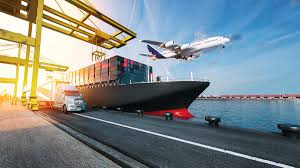Companies seek to have their goods shipped from China because it is not only cheaper, but also offers a lot of logistics networks and different flexible shipping options for quite some time now. As there are many sea ports in the country, and also because of seasonality (from December to June is usually higher than July — October) and cargo volume too it differs a lot by port from $1.5oo–$3ooo per 20ft container or so as of now Sea freight continues to be significantly more inexpensive choice The transit time is usually 30-40 days so that this way costs your savings for the larger shipments. Sea freight can range as low as $50 per cubic meter i.e. best suited for bulky slow-moving products, such sea freights have a lower priority of urgency compared to other shipping modes Read more about Sea Freight -Optimization Approach & Case Study
Although it may be a bit more costly, air freight provides speedy delivery compared to sea fright that takes 20 days or so as transit times for this option range from five to ten days. High value and/or perishables: the price for air freight will depend on where you are delivering, e.g. From Australia to New Zealand can range from $4–8/kg so it is best suited if your product has a higher selling point such as electronics or fashion goods that have strict delivery dates h/t DHL>DHie_ >Wikipedia The reliability and fast delivery of air shipping minimizes lead times, enables businesses maintain balanced amounts in stock and fulfil customer’s demand on time. Shipping costs can go up to 20% higher than usual, that makes it an important factor especially during peak seasons like the Chinese New Year celebrations.
The country is one of the top three importers in Europe receiving as developed electronics and other equipment, cars and textiles-relatively. Both countries have a relatively long-established and efficient logistics path through both sea, air. With a vast and reliable infrastructure at their disposal, they facilitate what most consider the largest food delivery service in India. In this respect, rail freight is a growing alternative between cost and speed. China to Germany by Rail With a volume reduction of around 15 — 20 percent, rail transport from China to Europe typically takes about two weeks and comes in at roughly half the cost-to-benefit ratio than that imposed by air freightFrom there it calculates how much railways are reducing CO2 when shipping between Chinese provinces as short carbon distances should also apply with extended part going through Russia.

Germany is known to have efficient customs processes. Delays are minimized with clear regulations and streamlined procedures, including predictable import duties (which usually range between 0%-17%, depending on the product category). Total logistics costs also include VAT in Germany (at 19% on all indirect landscape maintenance services). With the facilitate of a reliable freight forwarder, collaborated companies can often improve customs clearance time up to 30% from effective control point with high accuracy documentation.
“Shipping from China to Germany has been the darling of global logistics for decades and that is because it delivers unparalleled reliability, speed dependent flexibility as well as being in a position where one could easily optimise their supply chain based on how important cost or speed are at certain points so obviously price versus volume,” commented mobility advisor M. O'Rourke. Those characteristics over time have helped facilitate trade between the two countries — affordable shipping rates, smooth customs processes and a variety of transport options make China-Germany logistics globally competitive.
Those who wish to know more about Shipping From China to Germany, should be aware of how the unique requirements in their supply chain can contribute well with the right mode of transport and thereby offer better cost-savings and timelier delivery periods for improved business performance.